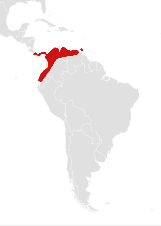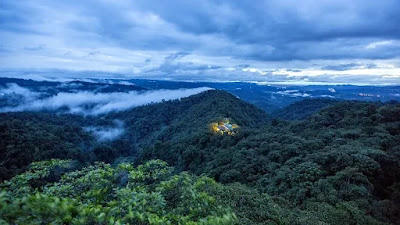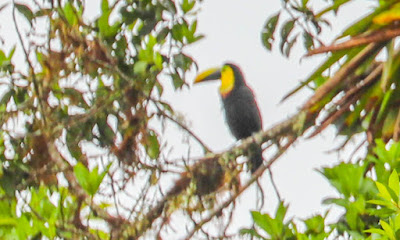I saw both male and female thick-billed euphonias in Mindo, Ecuador, at our hotel, Las Terrazas de Dana. They are found as far north as Costa Rica, then down through Panama, Colombia, Venezuela, Ecuador, Peru, Bolivia and Brazil.
 |
| Thick-billed euphonia range map from Wikipedia. |
The male is yellow below, on the throat and crown and mostly blue-black above.
The female is dull-olive above and greenish-yellow below.





















































